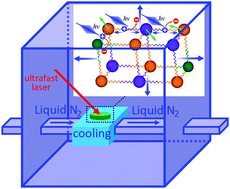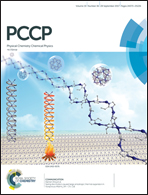Giant lattice expansion by quantum stress and universal atomic forces in semiconductors under instant ultrafast laser excitation†
Abstract
Femtosecond lasers (fs) can cause a disparity between electronic and lattice temperatures in the very short period after irradiation. In this relatively cool lattice regime, the material properties can differ drastically from those under thermal equilibrium. In particular, first-principles calculations reveal two general mechanical effects on semiconductors. Firstly, the excitation can induce a negative pressure on the lattice, causing a >10% expansion, even for superhard diamond. Secondly, it induces inhomogeneous local forces on the atoms, for both perfect and distorted lattices. In the case of phase-change-memory for Ge2Sb2Te5 and GeTe alloys, such random forces cause a simultaneous phase transition from crystalline to amorphous, which enables faster data writing. These excitation effects are further supported by the time-dependent density functional theory. This work could be an important step in advancing fs laser techniques for the atomic-level control of structures, rather than relying on traditional melting or ablation approaches which often apply to much larger and non-atomic scales.



 Please wait while we load your content...
Please wait while we load your content...